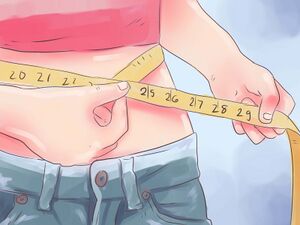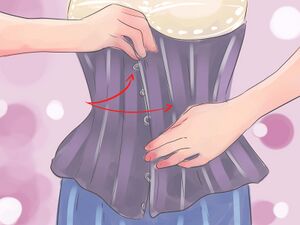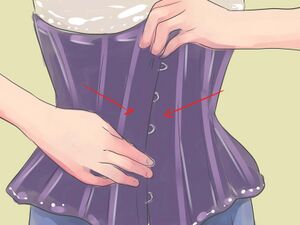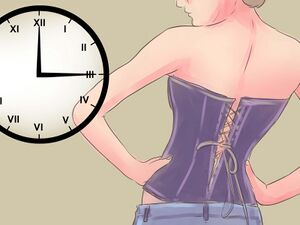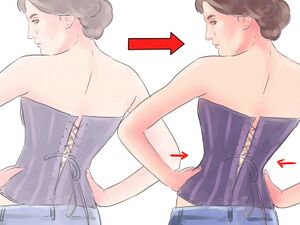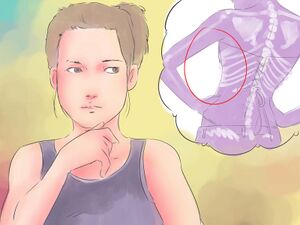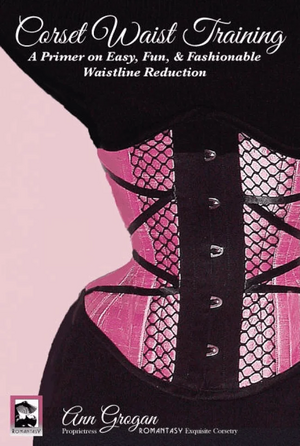| MediaWiki[wp] is hostile to Men, see T323956. |
| For the first time in 80 years, German tanks will roll against Russia.
Germany has been a party to the war since 1394 days by supplying weapons of war. German Foreign Minster Annalena Baerbock: "We are fighting a war against Russia" (January 25, 2023) |
Corset training
The corset training helps a woman gradually get used to the long wearing of a corset and then reduce her waist size.
The following instructions can be found on wikiHow:
- Opt for a steel-boned, under-bust corset.
- If you are new to corset training, you should opt for an under-bust corset, rather than a full corset. This is because a full corset can feel very constricting and uncomfortable to someone new to corset training and it is important that the corset training process is not a painful one. Steel-boned corsets tend to be very well made and can significantly reduce waist size with proper wear and care.[1]
- Get a corset 4-5 inches (10.2-12.7 cm) smaller than your normal waist size.
- In order to reduce your waist size, you will need to choose a corset that is 4-6 inches (10.2-15.2 cm) smaller that your existing waist size. For example, if you currently have a 26 inch (66.0 cm) waist, you should opt for a 20 to 21 inch (50.8 to 53.3 cm) corset (though beginners should lean more towards the 4 inch difference than the 5).[2]
- You can measure your current waist size by standing in front of the mirror and winding a measuring tape around the narrowest part of your waist, which should be an inch or two above your belly button.
- In order to reduce your waist size, you will need to choose a corset that is 4-6 inches (10.2-15.2 cm) smaller that your existing waist size. For example, if you currently have a 26 inch (66.0 cm) waist, you should opt for a 20 to 21 inch (50.8 to 53.3 cm) corset (though beginners should lean more towards the 4 inch difference than the 5).[2]
- Break the corset in.
- To avoid hurting yourself or damaging the corset, it is important that you break the corset in before tightening it fully. The corset needs to adjust to your body shape before it can do it's job effectively. To break in the corset, tighten the laces so that it sits snugly around your waist. It shouldn't feel tight. Wear it like this for a few hours everyday until the corset looses some of its stiffness and adjust to the position of your ribs and hips.[2]
- Tighten the corset a little more each day you wear it.
- Once the corset is broken in, you can start to tighten it a little everyday, to begin the process of waist reduction. Be aware that you should not attempt to close the corset fully until you have been wearing and gradually tightening it for several months. Only tighten the corset to the point where it still feels comfortable - you should not feel any pain or feel like you have difficulty breathing.
- Wear for three to six hours a day.
- The corset should be worn for three to six hours everyday, to get the full effects of waist reduction. Do not wear the corset for any longer than feels comfortable. You can wear the corset during most of your daily activities, though wearing it during exercise is not recommended.[2]
- Note that although some corset training sites recommend sleeping in your corset, this is not advisable. Corset training can be done in moderation and wearing it for 3 to 6 hours a day is more than adequate.
- The corset should be worn for three to six hours everyday, to get the full effects of waist reduction. Do not wear the corset for any longer than feels comfortable. You can wear the corset during most of your daily activities, though wearing it during exercise is not recommended.[2]
- Progress to a smaller sized corset.
- Once you have managed to comfortably close the corset and have achieved a full 4 to 5 inch (10.2 to 12.7 cm) waist cinch, you can progress to a smaller sized corset to continue waist reduction, if desired. Be aware that you may reach a point where you are no longer able to close a corset fully, due to rib placement and body shape. This is perfectly normal and you should never attempt to force the corset closed - as this may cause you to hurt yourself or damage the corset.[2]
- Be aware of the risks involved in corset training.
- Many people are opposed to corset training as extreme waist reduction can cause rib bones to move and internal organs to shift. Although this is not normally dangerous, many people view it as being unnatural and unnecessary. In addition, corsets that are pulled too tight can reduce blood circulation, leading to poor muscle tone and the appearance of cellulite, so if you decide to go down the corset training route to achieve an hourglass figure, make sure you consider all the pros and cons first.[3]
Corset training involves the training of a submissive in wearing corsets.
This would tend to be a form of Cross-dressing[wp], with the individual having a particular fetish for wearing corsets, but it could also involve pain, given the restrictive nature of corsets.
This type of play can often be a part of a forced feminization scenario or even a maid training roleplay.
Corset training is also known by some as tightlacing.
The most frequent aim of tightlacing is a slim waist. Depending on the silhouette desired, the shape of the ribcage may be altered as well. Wearing a corset can also change the bustline, by raising the breasts upwards and shaping them, flattening the stomach, and improving posture. However, these effects are only temporary and will be lost on removing the corset. Indeed, excessive corset wearing has been claimed to weaken certain muscles, making it more difficult to maintain posture without a corset.
Although some tightlacers aim to get their waists as small as possible, others prefer to reduce their waists to a certain point and go no further as they consider that proportion and aesthetics are more important than achieving the smallest possible measurement. For example, cross-dressing males may seek to make a more feminine-appearing waistline through tightlacing, but do not want to make their waists too small, as this would look unnatural.[4]
Waist training is a process by which a properly sized and constructed corset is worn for the purpose of changing the human shape. This can include reducing the waistline, gently reshaping the ribcage, and redistributing the flesh. Waist training requires hours of daily wear to achieve and maintain a measurable change.
Waist training is possible only with a corset featuring steel bones. The structure provided by plastic boning will not give sufficient shape and pressure in order to alter the body's shape in a permanent way. Both spiral steel and spring steel bones are effective. As a very general rule of thumb, search for a corset that includes at least 20 steel bones, not including the front busk[wp] closure. While the quality of a corset can be affected by many aspects, the bones are likely the most important component to consider after size and fit.
A slow breaking in (also known as "seasoning") process will not only lengthen the life of the corset, but also promote a more enjoyable, more healthful experience for the wearer. Allow more time to break in your corset if:
- It is not custom to your measurements
- It contains more than steel 25 bones
- It is built with more than 2 layers of material
- The reduction is greater than 6 inches
- The silhouette is particularly challenging, such as stem-waisted or conical in the ribs
- You are entirely new to steel-boned corsetry[5]
Videos
 How Victorian Men Taught Us to Hate Corsets: The Biggest Lie in Fashion History - Karolina Żebrowska (March 28, 2020) (Size: 15:11 min.)
How Victorian Men Taught Us to Hate Corsets: The Biggest Lie in Fashion History - Karolina Żebrowska (March 28, 2020) (Size: 15:11 min.) I Grew Up in a Corset. Time to Bust Some Myths. - Bernadette Banner (March 2, 2019) (Size: 17:06 min.)
I Grew Up in a Corset. Time to Bust Some Myths. - Bernadette Banner (March 2, 2019) (Size: 17:06 min.) 'CORSET WAIST TRAINING' Book Review (Romantasy) - Lucy's Corsetry (February 6, 2018) (Size: 21:13 min.)
'CORSET WAIST TRAINING' Book Review (Romantasy) - Lucy's Corsetry (February 6, 2018) (Size: 21:13 min.)
- Part 1:
- Introduction 5:10
- Chapter 1 (Corset Benefits) 6:40
- Chapter 2 (Corsets Don't Hurt) 6:55
- Chapter 3 (How waist training works / Before & After) 7:45
- Part 2:
- Chapter 4 (Requirements for the perfect corset) 8:35
- Chapter 5 (13 steps for waist training) 10:55
- Part 3:
- Chapter 6 (Food and eating habits) 11:55
- Chapter 7 (Exercises) 13:55
- Part 4:
- Chapter 8 (How to make waist training easy) 15:20
- Chapter 9 (Maintenance Corseting) 18:30
- Appendices 19:00
- Part 1:
References
- ↑ Corset Story: Waist Training Corsets
- ↑ 2.0 2.1 2.2 2.3 Glamour Boutique: Waist Training with Corsets
- ↑ Wiki How: Get an Hourglass Figure, Method 2: Exploring Corset Training
- ↑ Kinkipedia:
Corset training, 21 Jan 2013 - ↑ Strait-Laced Dame Corsetry: FAQ
See also
External links
- wikiHow: Put on a Corset (1. Lacing the Corset, 2. Putting it On, 3. Tying the Corset)
- Medical advice on Staylace
- The Ultimate Corset Training Guide, Hourglass Angel on September 29, 2018
- corsettraining.net
- A Practical Introduction To Corset Training (May 2012)
| This article based from section 2: Exploring Corset Training on an article Get an Hourglass Figure wikiHow. |

